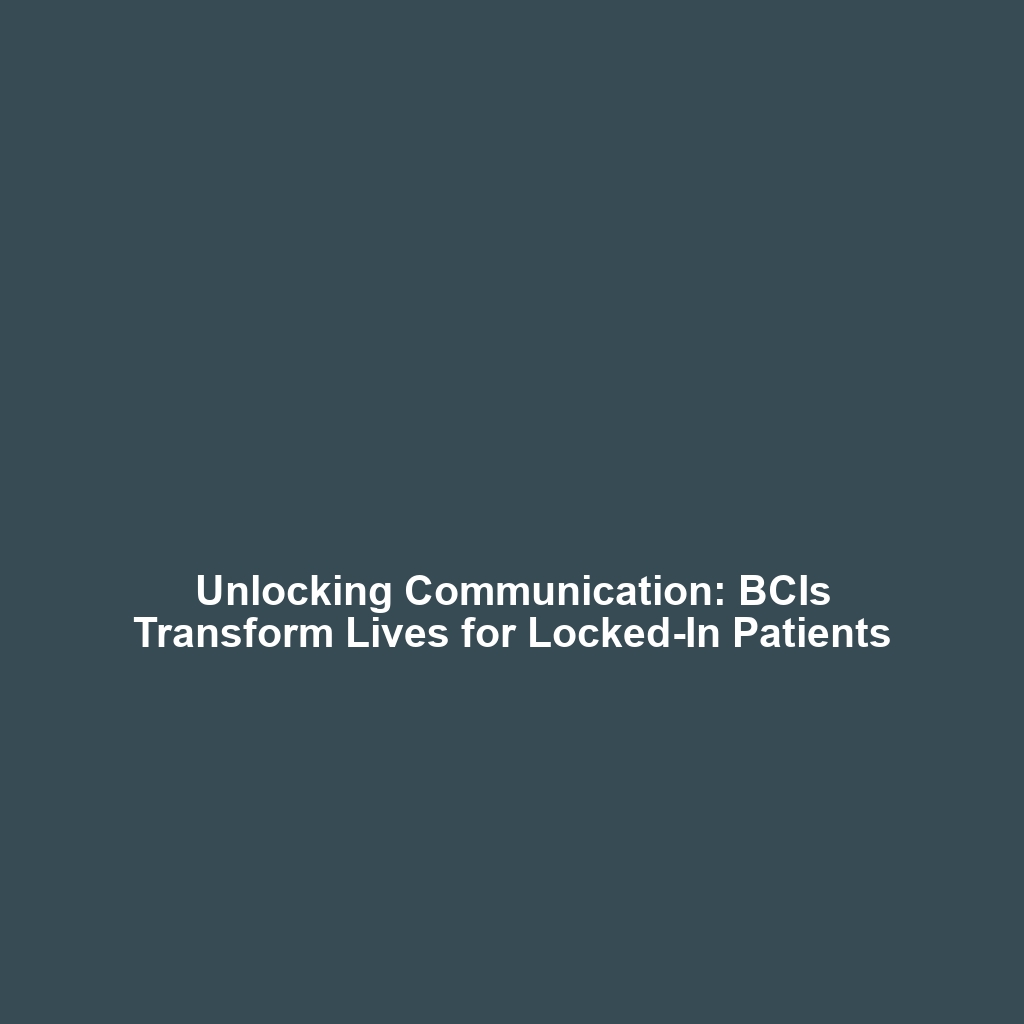Brain-Computer Interfaces: Transforming Communication for Patients with Locked-In Syndrome
Introduction
Brain-Computer Interfaces (BCIs) represent a revolutionary advancement in medical technology, offering transformative communication opportunities for individuals suffering from Locked-In Syndrome (LIS) or severe paralysis. These innovative systems can interpret neural signals, converting them into coherent text or speech, enabling patients to communicate effectively. This breakthrough holds significant implications within the broader context of BCIs, as it empowers those affected by debilitating conditions to regain their voice and independence.
Key Concepts
Understanding Brain-Computer Interfaces
Brain-Computer Interfaces (BCIs) are direct communication pathways between the brain and external devices. Utilizing advanced algorithms and signal processing techniques, BCIs decode neural impulses and translate them into actionable commands. For patients with Locked-In Syndrome or severe paralysis, BCIs can interpret brain signals associated with intention, thus allowing users to communicate despite complete physical immobility.
Neural Signal Interpretation
The process of translating neural signals into text or speech involves several key components:
- Neural Activity Detection: Electrodes are placed on the scalp or implanted in the brain to detect neural activity.
- Signal Processing: Advanced algorithms process the collected data to identify patterns associated with specific thoughts or intentions.
- Output Generation: Once interpreted, the signals are transformed into text or synthesized speech, enabling communication.
Applications and Real-World Uses
The remarkable applications of BCIs for communicating in patients with Locked-In Syndrome showcase their potential. Significant real-world uses include:
- AAC Systems: Augmentative and Alternative Communication (AAC) systems powered by BCIs allow patients to interact via tablet or computer interfaces.
- Smart Home Integration: BCIs can facilitate control over smart home devices, enabling patients to manage their environment independently.
- Therapeutic Communication: BCIs provide platforms for emotional expression and therapeutic dialogues, essential for mental health support.
Current Challenges
Despite their promise, the deployment of BCIs in this context faces several challenges:
- Signal Accuracy: Ensuring accurate interpretation of weak neural signals remains a technical hurdle.
- User Training: Patients require training to effectively use BCI systems, which can be a barrier to immediate implementation.
- Ethical Considerations: Potential issues regarding privacy and consent in decoding thoughts must be addressed.
Future Research and Innovations
Looking ahead, research in BCIs holds promise for groundbreaking innovations. Key areas of focus include:
- Enhanced Signal Processing Techniques: Improving algorithms for better accuracy and responsiveness in real-time.
- Brain-Implant Technologies: Developing more sophisticated implants that can provide higher fidelity readings of brain activity.
- Integration of AI: Using artificial intelligence to further refine communication and interaction algorithms.
Conclusion
Brain-Computer Interfaces are paving the way for a new era of communication for patients with Locked-In Syndrome or severe paralysis, allowing them to express their thoughts and feelings independently. As research progresses, overcoming existing challenges will enhance the effectiveness of BCIs, ensuring broader accessibility and usability. For more insights on Brain-Computer Interfaces and their applications, explore our related articles on Emerging BCI Technologies and Neurorehabilitation Innovations.
